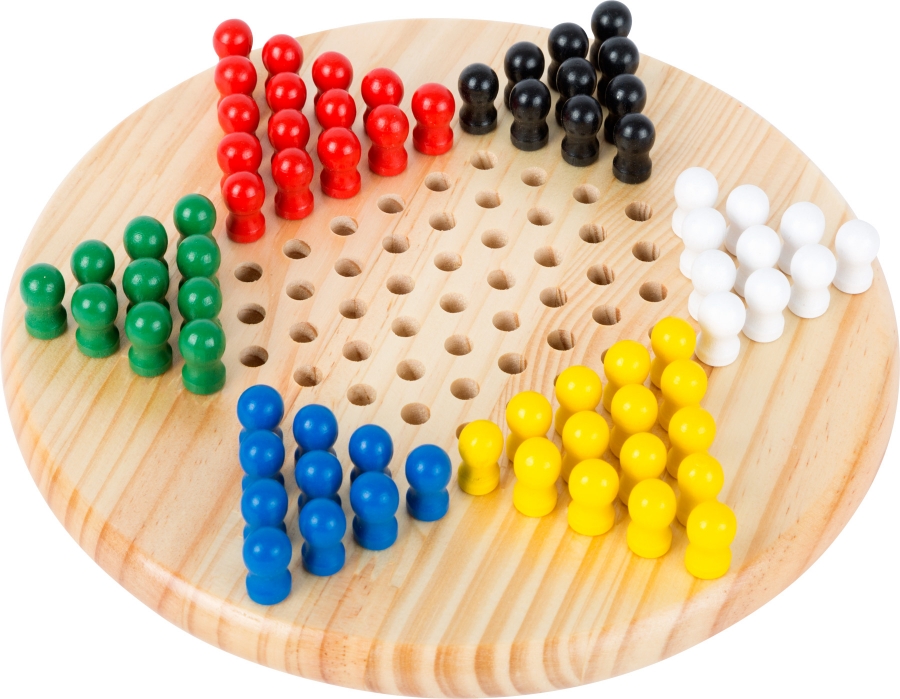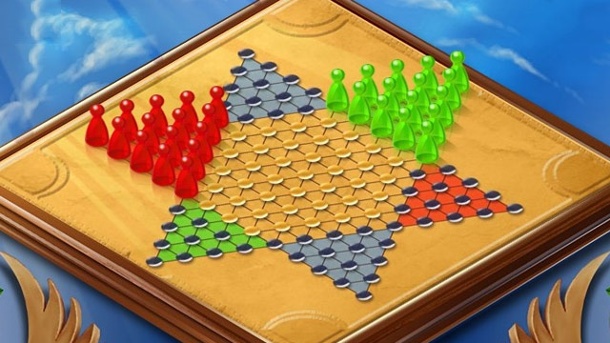
Fast-advancing players occasionally attempt to blockade an opposing piece, but this tactic can backfire if the other player is aware of it. Some sites implement a rule variation stating that a player automatically loses if they still have a piece in their start region after a certain number of moves (typically 30 for the 8×8 game, 50 for the 10×10 game). Halma set from the 1890s, showing box and pieces The name is misleading, since the game has no historical connection with China, nor is it a checkers game. Chinese Checkers, a variant of Halma, was originally published in 1892 as Stern-Halma (German for "Star Halma") and later renamed upon marketing to the United States to appear more exotic.The mechanic of jumping pieces is reminiscent of draughts (checkers) but differs in that no opposing pieces are ever captured or otherwise withdrawn from the board nor is jumping compulsory.Otherwise, play proceeds clockwise around the board. If the current play results in having every square of the opposing camp occupied by one's own pieces, the acting player wins.



Players randomly determine who will move first.Valid (green) and invalid (red) moves of a white pawn in Halma


 0 kommentar(er)
0 kommentar(er)
